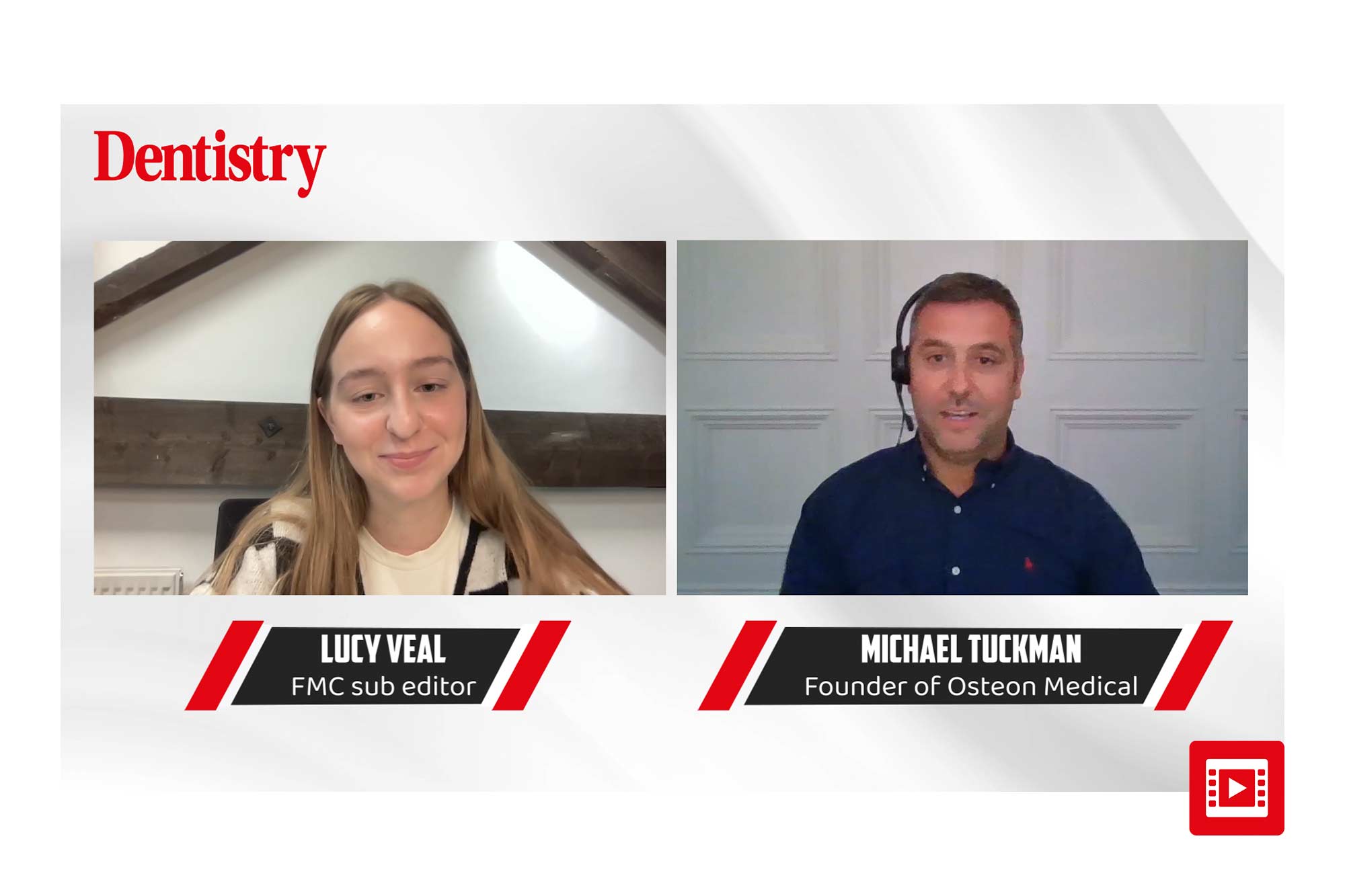
[embedded content]
Michael Tuckman discusses how Nexus iOS provides an accurate and passive full arch fit with fewer appointments.
Thanks very much for joining me today, Michael. Can you start just by introducing yourself for me, please?
Hi, I’m Michael Tuckman, and I’m the founder of Osteon Medical and the inventor of Nexus iOS Technology.
How and why Was Nexus iOS born?
Nexus iOS was born basically to solve a lot of the iOS challenges around capturing full-arch. Historically, iOS scanners needing scanning intraorally for full-arch implants has been a bit of a challenge.
So, we set out in about 2017 to be able to solve a lot of those challenges through the development of Nexus iOS, and we did so for about three years or so. In our fourth year we completed we actually solved the process of acquiring a passive fit using only an iOS scanner. That was done in conjunction with our developed scanning gauges, which is now patented, and we commercialised that in 2020.
Both the company and the product have had some great growth so far. How have clinics reacted to it?
Clinics have reacted to it very well. The main feedback is the passivity of fit, which is great. So the passivity of fit is one of the main comments we get in terms of the fact that they can’t believe the passivity of the fit. The speed of acquisition, so how fast it takes them to scan and upload the case to us.
And then there are fewer appointments for the overall treatment, the end to end treatment. Doctors are mainly seeking to reduce their appointments, especially when treating full arch. So this helps them solve that by reducing appointments from anywhere from five to seven appointments right down to two or three appointments for the same treatment cycle using the Nexus iOS solution.
And it’s quite a common concern that iOS isn’t accurate enough full-arch. How does Nexus iOS kind of fix that?
With regards to that statement, it is a fact that iOS scanners, when used conventionally, are not accurate enough for the capture of full arch. The way we worked around that is we developed specific scan gauges calibrate the scan as you pan across the arch.
Without going into too much detail, we essentially understand that we can detect where the stitching is in the various parts of the scan and we can eliminate it through the use of a calibration process. And that becomes a real-time calibration process.
We also use fairly sophisticated software when that scan comes through to us, which enables the processing of that calibration data to be able to be reversed back to a library of sorts that the doctor has with them, which comes with the kit.
So trying to summarise how we’ve been able to do it, we have been able to do it by predicting some of the errors and overcoming them through the development of the technology, the software, as well as the scan gauges themselves.
As the inventor of Nexus iOS, what can we expect from you in the future? Is there anything in the pipeline?
We do have software coming which is called Nexus Connect. And I think it’s a global first – it’s an AI enabled software which allows you, the doctor, to be able to get real-time feedback after you’ve scanned the patient, to be able to indicate to you whether you will have a passively fitting framework or not, which is one of the biggest challenges in modern implant dentistry – will this fit or not?
Now we have a digital verification tool that you can use in real-time often while the patient’s in the chair. And so we’re really excited about that, it’s going to be launched next week.
For more information, visit www.nexusios.com
Adblock test (Why?)






